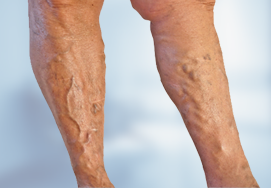Crush Injuries
Liposuction, also known as lipoplasty, slims and reshapes specific areas of the body by removing excess fat deposits, improving your body contours and proportion, and ultimately, enhancing your self-image.

- What is a crush injury of the lower limb?
-
What are the treatment options for the crush
injuries of the lower limb? - Which individuals are eligible for the surgery?
- How should I prepare for the surgery?
- What will happen during the surgery?
- What is the aftercare of the surgery?
- What are the post-surgical considerations?
What is a crush injury of the lower limb?
A crush injury to the foot or lower limb is a physical injury caused by the compression between two hard objects which results in severe bone and soft tissue injury. Depending on the force or pressure there are varying degrees of crush injuries which include:
- Simple injuries which may be due to heavy objects falling on the feet
- Moderate injuries which may be due to auto accidents
- Severe injuries which can occur when heavy machinery is running over a foot or in natural disasters such as earthquakes.
Damage due to crush injuries can be manifested as lacerations, bruising, fractures, nerve damage or vascular injury to the limb.
You may experience severe pain, swelling in the leg, numbness and tingling, change in skin color of the leg, and coldness to the leg and foot if you have crush injury.
Crush injuries with moderate to severe nature require immediate attention due to the high risk of death of tissue caused by a compromised blood supply to the area.
Another major risk of crush injuries is compartment syndrome which may lead to diminished healing causing necrosis, and death of the tissues. Another serious complication of crush injuries is crush syndrome or Rhabdomyolysis which may lead to renal failure, irregular heartbeat, disability and even death.
What are the treatment options for the crush injuries of the lower limb?
You doctor will diagnose crush injuries by performing a physical examination and by asking about the history of the accident. Diagnostic tests such as X-rays to assess for bone fractures and MRI and CT scans to assess extent of tissue damage. Blood tests are performed to assess blood loss and Rhabdomyolysis.
Your surgeon will closely assess the injury and decide upon the treatment strategy depending on the extent of deformity of the lower limb.
Which individuals are eligible for the surgery?
The surgery is recommended and performed on an emergency basis. Therefore, most individuals will be eligible for surgery once hemodynamically stabilized.
How should I prepare for the surgery?
if crush injury leads to compartmental syndrome and crush syndrome (rhabdomyolysis) then Fasciotomy is usually performed in an emergency condition. So, you may not require any preparation for the surgery.
What will happen during the surgery?
Reconstructive surgery may involve many steps or settings, which may be spaced apart to help tissues and patient recover.
- Surgical debridement and repair of damaged tissues
- Devitalized tissues are removed and vital structures are preserved.
- Contamination in tissues is cleaned and excised.
- Bony fixation is done early to stabilized the limb
- Soft tissue coverage for areas of soft tissue loss or exposure of vital structures
What is the aftercare of the surgery?
Your affected extremity will be elevated 24 to 48 hours after the surgery which will help to decrease swelling and pain. If necrotic muscle develops, you are returned to the operating room for excision of the developed necrotic muscle.
Follow the instructions carefully for better recovery:
- Take the prescribed medications on time. Your doctor may prescribe antibiotics to reduce the risk of infection.
- Avoid smoking and alcohol as they can cause tissue damage and prolong the recovery.
- Do not forget to follow the stretching and strengthening exercises suggested by your physiotherapist.
- Take a diet rich in glucose or fructose; that helps in decreasing the pain and fatigue associated with the surgery.
What are the post-surgical considerations?
Soon after the surgery, you may experience mild to moderate pain at the surgical site. Do not worry, take the medications on time.
Development of blood clots is the common surgical complication. Other complications include skin sloughing, infection, muscle weakness or damage, nerve or blood vessel injury, and scarring.
Call your surgeon immediately if,
- There is a severe pain at the surgical site and does not relieve with analgesics.
- The skin near the injured area turns blue and if you feel cold and numb.
- There is swelling in the injured.
- You have trouble moving the injured extremity.









